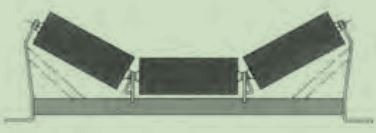 Afrikaans
Afrikaans  Albanian
Albanian  Amharic
Amharic  Arabic
Arabic  Armenian
Armenian  Azerbaijani
Azerbaijani  Basque
Basque  Belarusian
Belarusian  Bengali
Bengali  Bosnian
Bosnian  Bulgarian
Bulgarian  Catalan
Catalan  Cebuano
Cebuano  Corsican
Corsican  Croatian
Croatian  Czech
Czech  Danish
Danish  Dutch
Dutch  English
English  Esperanto
Esperanto  Estonian
Estonian  Finnish
Finnish  French
French  Frisian
Frisian  Galician
Galician  Georgian
Georgian  German
German  Greek
Greek  Gujarati
Gujarati  Haitian Creole
Haitian Creole  hausa
hausa  hawaiian
hawaiian  Hebrew
Hebrew  Hindi
Hindi  Miao
Miao  Hungarian
Hungarian  Icelandic
Icelandic  igbo
igbo  Indonesian
Indonesian  irish
irish  Italian
Italian  Japanese
Japanese  Javanese
Javanese  Kannada
Kannada  kazakh
kazakh  Khmer
Khmer  Rwandese
Rwandese  Korean
Korean  Kurdish
Kurdish  Kyrgyz
Kyrgyz  Lao
Lao  Latin
Latin  Latvian
Latvian  Lithuanian
Lithuanian  Luxembourgish
Luxembourgish  Macedonian
Macedonian  Malgashi
Malgashi  Malay
Malay  Malayalam
Malayalam  Maltese
Maltese  Maori
Maori  Marathi
Marathi  Mongolian
Mongolian  Myanmar
Myanmar  Nepali
Nepali  Norwegian
Norwegian  Norwegian
Norwegian  Occitan
Occitan  Pashto
Pashto  Persian
Persian  Polish
Polish  Portuguese
Portuguese  Punjabi
Punjabi  Romanian
Romanian  Russian
Russian  Samoan
Samoan  Scottish Gaelic
Scottish Gaelic  Serbian
Serbian  Sesotho
Sesotho  Shona
Shona  Sindhi
Sindhi  Sinhala
Sinhala  Slovak
Slovak  Slovenian
Slovenian  Somali
Somali  Spanish
Spanish  Sundanese
Sundanese  Swahili
Swahili  Swedish
Swedish  Tagalog
Tagalog  Tajik
Tajik  Tamil
Tamil  Tatar
Tatar  Telugu
Telugu  Thai
Thai  Turkish
Turkish  Turkmen
Turkmen  Ukrainian
Ukrainian  Urdu
Urdu  Uighur
Uighur  Uzbek
Uzbek  Vietnamese
Vietnamese  Welsh
Welsh  Bantu
Bantu  Yiddish
Yiddish  Yoruba
Yoruba  Zulu
Zulu Conveyor Pulley Design Guidelines and Performance Specifications for Industrial Applications
Understanding Conveyor Pulley Specifications
Conveyor pulleys are crucial components in material handling systems, ensuring efficient and safe movement of goods along conveyor belts. The specifications of these pulleys greatly influence the overall performance and durability of the conveyor system. Understanding these specifications is essential for selecting the right pulley for specific applications.
Types of Conveyor Pulleys
Conveyor pulleys are generally categorized into several types, including drive pulleys, return pulleys, tail pulleys, and snub pulleys. Each type serves a unique function within the conveyor system. Drive pulleys, for instance, are responsible for powering the conveyor belt, while return pulleys support the return side of the belt to prevent sagging. Tail pulleys are positioned at the rear of a conveyor system and help in maintaining tension, whereas snub pulleys are used to increase the angle of wrap around the drive pulley, enhancing its grip.
Material and Construction
The materials used in pulley construction are critical for their performance. Common materials include steel, aluminum, and plastic. Steel is often preferred for heavy-duty applications due to its strength and durability. Conversely, lightweight materials like aluminum may be used for lighter applications where corrosion resistance is a priority. The construction quality also plays a significant role; pulleys must be manufactured to withstand wear and tear, particularly in environments exposed to moisture, dirt, and heavy loads.
conveyor pulley specification

Dimensions and Load Capacity
When selecting a conveyor pulley, two key specifications are dimensions and load capacity. The diameter of the pulley affects the belt tension and the overall conveyor performance. Larger pulleys can reduce belt wear and increase life expectancy but may require more space. Load capacity is another critical factor, as it signifies the maximum weight the pulley can support without failure. It is essential to match the pulley to the operational demands to prevent breakdowns and ensure efficiency.
Engineering and Design Standards
Adhering to recognized engineering and design standards is essential when specifying conveyor pulleys. Organizations such as the Conveyor Equipment Manufacturers Association (CEMA) provide guidelines for the design and manufacturing of conveyor components. These standards ensure safety, reliability, and compatibility with various conveyor systems, promoting optimal performance in diverse applications.
Conclusion
In conclusion, understanding conveyor pulley specifications is vital for the successful operation of conveyor systems. From the type and material to dimensions and load capacity, each specification plays a significant role in ensuring efficiency and longevity. Whether you're involved in the selection or design of conveyor systems, prioritizing these specifications will lead to more reliable and effective material handling solutions. By aligning your choices with industry standards, you can improve performance and minimize operational issues, contributing to a more streamlined workflow in your facility.
-
Revolutionizing Conveyor Reliability with Advanced Rubber Lagging PulleysNewsJul.22,2025
-
Powering Precision and Durability with Expert Manufacturers of Conveyor ComponentsNewsJul.22,2025
-
Optimizing Conveyor Systems with Advanced Conveyor AccessoriesNewsJul.22,2025
-
Maximize Conveyor Efficiency with Quality Conveyor Idler PulleysNewsJul.22,2025
-
Future-Proof Your Conveyor System with High-Performance Polyurethane RollerNewsJul.22,2025
-
Driving Efficiency Forward with Quality Idlers and RollersNewsJul.22,2025





























